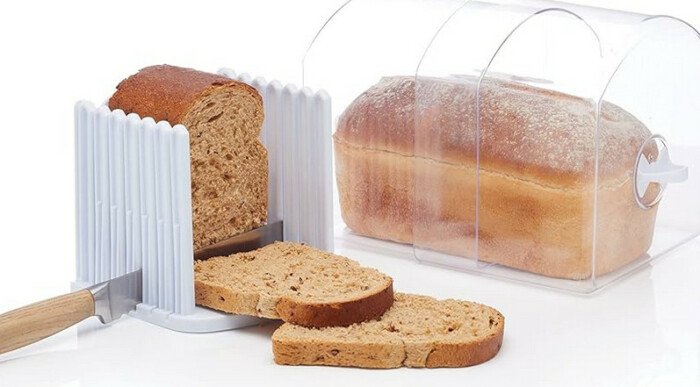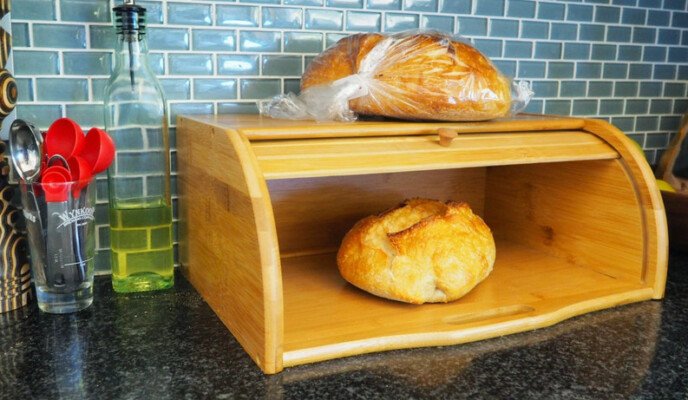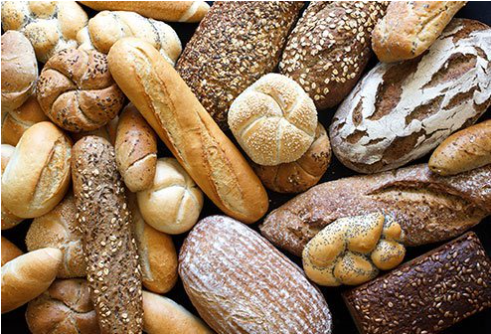|
Getting your Trinity Audio player ready...
|
Bread, a culinary cornerstone in many households, is at its pinnacle when it boasts freshness and flavor. Properly storing your bread is more than a mere necessity; it’s an art. Whether you’ve diligently baked it at home or acquired it from a trusted bakery, knowing the right way to store your loaf can significantly impact its longevity and taste.

The Enemies of Freshness
To uphold the enticing qualities of your bread, understanding and countering its adversaries are paramount. Air, moisture, and temperature fluctuations stand as the triumvirate of trouble. When bread is exposed to air, it becomes susceptible to a process that saps its moisture, rendering it stale and lackluster in both taste and texture. Conversely, an abundance of moisture, often from improper storage or humid environments, acts as an open invitation for mold growth, turning your bread into an inedible hazard. Furthermore, the impact of temperature fluctuations cannot be understated. These swings in temperature accelerate the degradation of bread, exacerbating both moisture loss and potential mold proliferation. Guarding against these elements becomes a vigilant duty, crucial for preserving the delightful freshness of your beloved bread.
The Ideal Bread Storage Environment
Selecting the optimal location for storing your bread constitutes the very cornerstone of preserving its freshness. It’s the initial and crucial step in the quest to maintain that delightful taste and texture. A cool, dark, and dry place embodies the holy trinity of bread preservation. The coolness slows down any potential microbial growth, darkness prevents any degradation caused by light exposure, and dryness combats excessive moisture that could ruin the bread’s texture and lead to mold growth.
A well-ventilated pantry or a designated bread box serves as an ideal abode for your loaf. These spaces offer the necessary airflow, aiding in moisture regulation. Placing your bread away from direct sunlight is equally vital, as sunlight can hasten the staleness process and alter the taste. Additionally, steering clear of moisture-rich areas is crucial to prevent unwanted mold growth, ensuring your bread stays appetizing.
Wrapping Your Bread for Freshness
How you wrap your bread is a vital facet of its preservation. Opt for plastic wrap or aluminum foil to create a barrier against air and maintain an optimal level of moisture within the loaf. Alternatively, utilizing a bread bag or airtight container is equally effective. A snug fit of the wrapping is crucial—it ensures the bread retains its moisture and prevents premature staleness.
Freeze for Freshness
If you foresee that your bread won’t be consumed within a few days, freezing is a wonderful solution. Simply slice the loaf, wrap it securely, and freeze. When you’re ready to enjoy it, retrieve the slices and allow them to thaw at room temperature. This method effectively halts the staleness process, preserving the taste and texture.
The Breadbox Wonder
A breadbox stands as a dedicated fortress for your beloved loaf. It’s designed to maintain an ideal microenvironment—allowing adequate airflow to prevent excess moisture while providing sufficient enclosure to prevent unwanted air exposure. A breadbox is the unsung hero of bread preservation, extending the freshness of your loaf by several additional days.
Store-Bought Bread and Its Storage
Store-bought bread often comes fortified with preservatives to prolong its shelf life. However, even with these added ingredients, appropriate storage remains essential to maintain its quality. Follow the packaging instructions meticulously. If the bread is preservative-free, adhere to general storage guidelines to maximize its inherent freshness.
Reviving Stale Bread
Despite your best efforts, there might come a day when your loaf loses its initial freshness. When faced with stale bread, all is not lost. A simple and effective method involves sprinkling the loaf lightly with water, and then placing it in a preheated oven for a few minutes. The moisture and heat will reinvigorate the bread, granting it a revitalized, fresh-out-of-the-oven taste.
Conclusion
The art of bread storage is a fundamental skill for every bread enthusiast. By understanding the foes of freshness, crafting an optimal storage environment, and implementing various effective techniques, you can ensure your loaves remain delightful and flavorful, turning every meal into a pleasure. Allow these storage tips to illuminate your path as you strive to preserve the perfect loaf. Happy bread-baking and storing! 🍞
You will find the following information useful:



